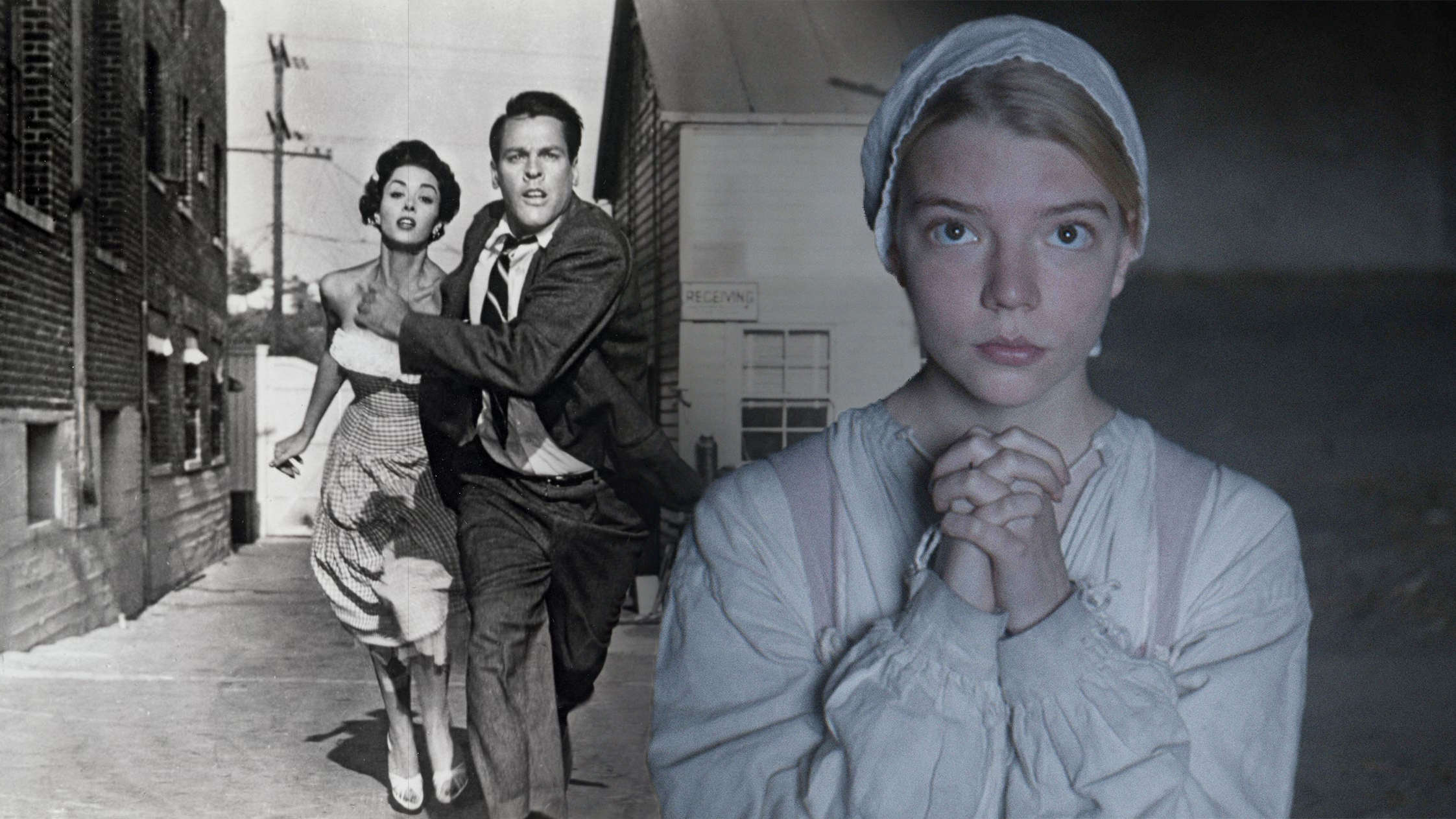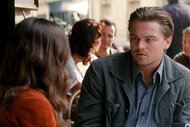Create a free profile to get unlimited access to exclusive videos, sweepstakes, and more!
'The Witch' and 'Invasion of the Body Snatchers' make horror out of both conformity and individuality

Horror is about that cackling outsider, scratching at your door. The question in the genre is always which side of the portal you’re on. Are you with the community, fighting the threat? Or are you rooting for the monster to break through and savage the dull weight of ordinariness?
From that perspective, Don Siegel’s 1956 film Invasion of the Body Snatchers, which turns 65 this month, and Robert Eggers’ 2016 film The Witch, which turns 5, are ugly, oozing mirror images. Body Snatchers is about how evil alien pod people infiltrate the small, wholesome 1950s California town of Santa Mira. The Witch is about a good, wholesome, God-fearing family in the 1630s and how much fun it is when their daughter gets to abandon their boring hypocrisy to join a bacchanal of witches. You could argue that between 1956 and 2016, good, wholesome Americanism started to look less heroic and more like death. Eggers’ witches are Siegel’s aliens, but with better PR.
If you look closer into the maw of evil and/or good, though, you start to wonder whether even the PR has changed. Body Snatchers has as much dislike for deindividuation as The Witch; The Witch mistrusts freedom as much as Body Snatchers. Both celebrate an American individualism that they both also fear, and for good reason.
The much-remade Body Snatchers is a classic of Cold War paranoia. Handsome, hearty doctor Miles Bennell (Kevin McCarthy) returns from a conference to discover the town of Santa Mira in the grips of a quiet epidemic of neuroses. Patients believe their close relatives — mothers, uncles, fathers — have been replaced with exact, unfeeling duplicates.
Miles is skeptical at first, but it’s all true. Space spores have landed and grown giant pods. These open to reveal wet plant people, who absorb sleeping human minds and personalities. The film is shot in crisp black and white, and its horror comes from seeing rational, suburban normality fray and disintegrate even as it continues to look precisely like rational, suburban normality. Everyone goes about their business as always. It’s just that the business becomes perversion and apocalypse.
In the '50s, perversion, apocalypse, and Marxism were seen as all of a piece. The people who are replaced by the pods lose all appetite for business and consumption, abandoning produce stands and closing shops. They want only to spread the pods further, across the nation and the world. “Love, desire, ambition, faith. Without them life’s so simple,” one of the pod people declares with the menacing altruistic calm of a devoted cultist. The alien communists drain away personality and autonomy, leaving a hive mind that has feelings and energy only for the collective. It’s a nightmare vision of American individualism subsumed by socialist group-think.
In The Witch, the threat of conformity comes not from the communists, but from the church. William (Ralph Ineson) is a stubborn religious dissenter who is kicked out of a New England settlement. He, his wife, and their five children settle in a clearing in the woods, where they pursue a dreary, colorless existence, filmed in sweeping vistas of ravishing bleakness. They subsist on a diet of starvation rations and fears of hellfire. William’s idea of a fun father-son chat is to quiz his boy, Caleb (Harvey Scrimshaw), in an elaborate catechism about the corruption of his soul.
The family’s obsessive fear and paranoia leave them with few resources when the witches steal away infant Sam. Williams, his wife, and their children quickly turn on each other in a brief, sexless orgy of paranoia, recrimination, and hypocrisy. When older daughter Thomasin (Anya Taylor-Joy) gets a chance to sell her soul to the devil for the taste of butter, pretty dresses, and other lascivious pleasures, who can blame her? Flickering candlelight gives her a beauty and color the movie has almost entirely denied her as Satan whispers, “Wouldst thou like to live deliciously?” She and the viewer answer with an enthusiastic affirmative.
Thomasin is ironically achieving the American dream her dreary father grasped for. He wanted absolute freedom of conscience and fled England to escape from the stifling, dead norms of the old world. Family, church, community — they demand you stifle desires for the good of the group, just like pod people always do. Thomasin, nude, blood-spattered, ecstatically laughing as she floats into the trees in the film’s final dramatic shot, has escaped that hivebound gravity. She becomes her truest self through an exercise of individualist, American will — like Ben Franklin, if he were a self-made demon rather than a self-made businessman.
Does Thomasin really make herself over, though? When the Devil asks her to sign the book, she has to admit she doesn’t know how to write her name. “I will guide your hand,” he says in that rich, velvety voice. But if he’s the one manipulating Thomasin here, might he not have been manipulating her throughout? It’s only because witches steal away infant Sam, curse Caleb, and, it is implied, spoil the harvest, that Thomasin’s family falls apart. The film is a plot against Thomasin; the director is Satan himself, leading her to damnation. Thomasin has little more choice than her siblings, who, it is intimated, are stolen away by the witches to be boiled down for their fat. American freedom is a trick the Devil plays to convince you to crawl into his mouth.
Invasion of the Body Snatchers is also not quite so emblematic of virtuous American independence as it seems at first. After all, the whole point of the movie is that the pod people are us; we’re one and the same. When the good folks of Santa Mira — the cop, the psychiatrist, the housewives — all chase after Miles and his girlfriend Becky Driscoll (Dana Wynter), it looks eerily like a witch-hunt. And the targets of witch-hunts in America and Hollywood in the 1950s were not capitalists, but Communists.
In the name of freedom, those Communists were persecuted and hounded for refusing to bow to community norms. In the film’s conclusion, Miles contacts the authorities, and the weight of U.S. military and logistical power is poised to sweep down on the pods. A story supposedly about communists assimilating Americans ends up as a story about Americans exterminating communists. All the aliens will be destroyed for the cardinal sin: refusing to embrace the communal value of individualism.
Americans love liberty. It’s such a core value that those who do not hold it are viewed with suspicion. You must be an individual or face the consequences of communal loathing. As a result, the ecstatic Dionysiac abandonment of the witches and the satisfied emotionless calm of the pod people start to look much the same. When you watch Body Snatchers and The Witch together, the horror isn’t individuality. Nor is it the obliteration of individuality. It’s that you can’t tell the two apart.
<The views and opinions expressed in this article are the author's, and do not necessarily reflect those of SYFY WIRE, SYFY, or NBCUniversal.


























